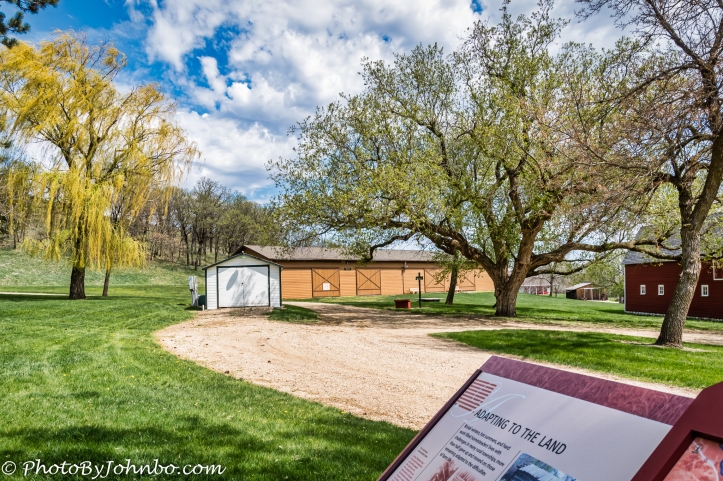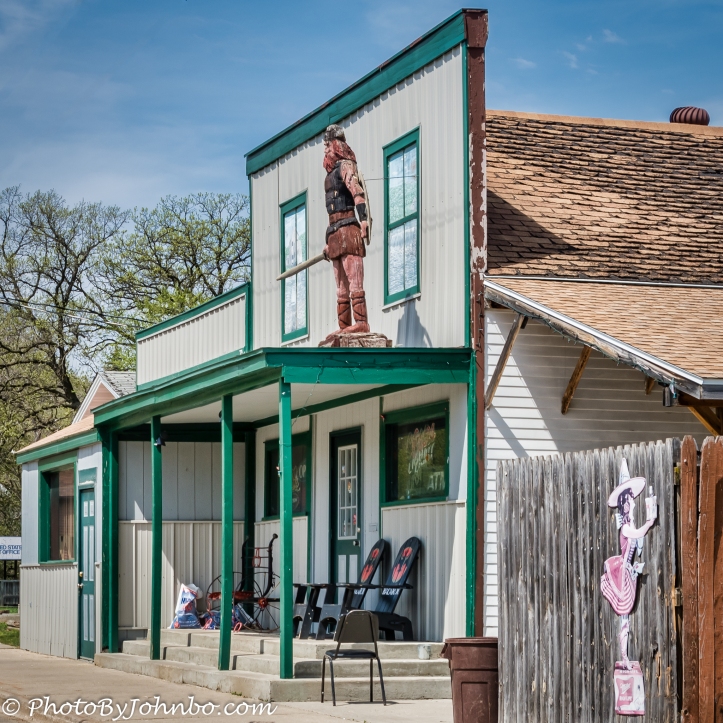Last summer, I featured here a journey along one of the nation’s Scenic Byways, the Sheyenne River Valley National Scenic Byway. Though the series of posts ran for a few Travel Tuesdays, I left out a few scenic points. Today’s Travel Tuesday picks up three of these byway stops along the Sheyenne River south of Valley City North Dakota. Fort Ransom was a military outpost active between 1867 and 1872. The short-lived fort protected a trail used by homesteaders and railroad builders in the area between Bismarck and Fargo.
For centuries, Native American farmers, the Hidatsa, Mandan and Cheyenne tribes spent time in the lush Sheyenne River Valley. In the last half of the 19th century, settlers from the east, many of Norwegian heritage, chose the area to homestead. The state park features two homestead sites and explores the settlement of the area as an agricultural center. One of the homes is now the visitor center at the park and the other is the site of a celebration known as Sodbuster Days held in July and again the weekend after Labor Day each year.
 Plaques throughout the park designed after the National Byway descriptors describe points of interest in the park. In the opening image, a view of the prairie grassland in featured. The image immediately above features one of the homesteads in the park. The park itself opened in 1979 and attracts visitors winter and summer. Canoes are popular in the Sheyenne River that flows through the southern section of the park and during those famous North Dakota winters, snowmobiling and cross country skiing are popular pastimes. There are several trails, most under a mile long, that feature up close and personal views of the park. Probably the most notable trail is a 2.2 mile trail segment of the North Country National Scenic Trail, a 4600 mile (7402 km) trek that, when completed, will cross seven states from New York to North Dakota. Google North Country National Scenic Trail for more information on this hiking trail through some of the most beautiful country in the northern United States.
Plaques throughout the park designed after the National Byway descriptors describe points of interest in the park. In the opening image, a view of the prairie grassland in featured. The image immediately above features one of the homesteads in the park. The park itself opened in 1979 and attracts visitors winter and summer. Canoes are popular in the Sheyenne River that flows through the southern section of the park and during those famous North Dakota winters, snowmobiling and cross country skiing are popular pastimes. There are several trails, most under a mile long, that feature up close and personal views of the park. Probably the most notable trail is a 2.2 mile trail segment of the North Country National Scenic Trail, a 4600 mile (7402 km) trek that, when completed, will cross seven states from New York to North Dakota. Google North Country National Scenic Trail for more information on this hiking trail through some of the most beautiful country in the northern United States.
 No matter where you are along the scenic byway, the Sheyenne River isn’t far away. During wet springs, this river can exceed its banks causing localized flooding and other hazards typical of life in any river valley. I’ve flown many hours in Civil Air Patrol aircraft during flood season surveying the spread of the river into the wide, low flood plain, our crews photographing and reporting conditions along the river that eventually empties into the Red River of the North near West Fargo, North Dakota.
No matter where you are along the scenic byway, the Sheyenne River isn’t far away. During wet springs, this river can exceed its banks causing localized flooding and other hazards typical of life in any river valley. I’ve flown many hours in Civil Air Patrol aircraft during flood season surveying the spread of the river into the wide, low flood plain, our crews photographing and reporting conditions along the river that eventually empties into the Red River of the North near West Fargo, North Dakota.
 Follow the river just south of the park and you come to the small town of Fort Ransom. There are several sites in the town that are features of the National Scenic Byway. Don’t mistake Fort Ransom for a high density city. The 2010 census reports the population at 77 people, 43 households and an average family size of 2.32 members. The actual site of the fort is about three miles south of the State Park and south of the town itself.
Follow the river just south of the park and you come to the small town of Fort Ransom. There are several sites in the town that are features of the National Scenic Byway. Don’t mistake Fort Ransom for a high density city. The 2010 census reports the population at 77 people, 43 households and an average family size of 2.32 members. The actual site of the fort is about three miles south of the State Park and south of the town itself.
 At the beginning of this post, I commented on featuring three attractions along this section of the scenic byway. Just east of the town, the 25-foot (7.6 m) statue of wire mesh and fiber tape stands at the top of Sorby Hill. You can even choose to stay at the Viking View Resort (4.5 stars, 2 reviews on Google.) The gallery of images below features scenes captured both in the park and in the town. On most browsers, you can click on an image to enlarge it and to scroll through the gallery.
At the beginning of this post, I commented on featuring three attractions along this section of the scenic byway. Just east of the town, the 25-foot (7.6 m) statue of wire mesh and fiber tape stands at the top of Sorby Hill. You can even choose to stay at the Viking View Resort (4.5 stars, 2 reviews on Google.) The gallery of images below features scenes captured both in the park and in the town. On most browsers, you can click on an image to enlarge it and to scroll through the gallery.
John Steiner













Whoa! It’s been a long, long time since I ingested the views of Fort Ransom, thanks for the nostalgia! Once again I’m traveling vicariously through your blog.
Yup. Going back soon for a . Longer look.